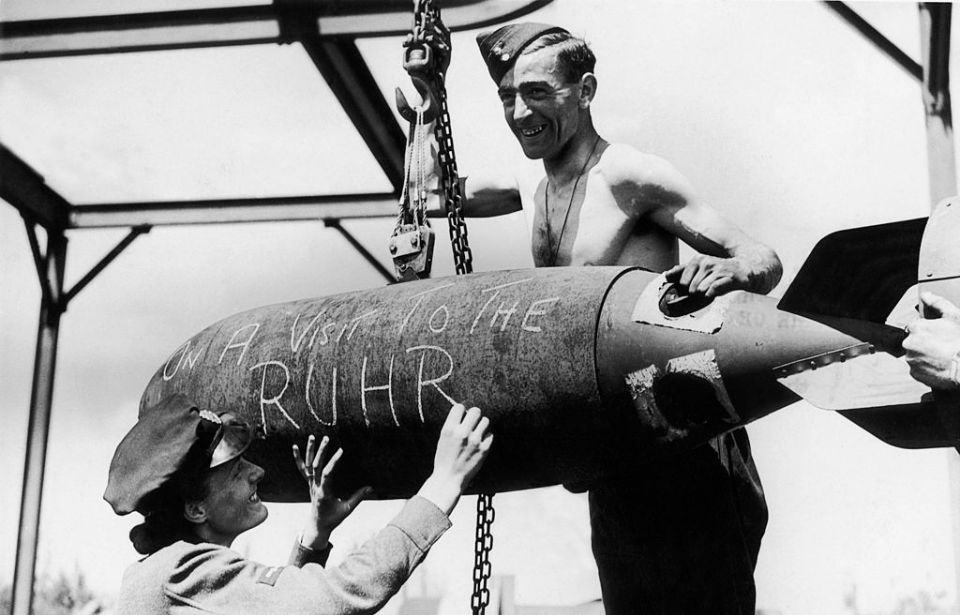Throughout World War II, the Allied forces – in particular, the Royal Air Force (RAF) and the US Army Air Forces (USAAF) – conducted several bombings against industrial targets across Germany, with the aim of disrupting operations and destroying infrastructure. One of the most controversial was the Battle of the Ruhr in 1943.
The Allies focused much of their bombing campaigns on the Ruhr because it was known for being Germany’s industrial hub. The valley fueled the country’s war machine, and the Allies knew they needed to destroy the factories producing the German military’s supplies and weapons if they wanted to win the war.
Along with producing synthetic oil and manufacturing armaments, the Ruhr Valley processed coke and was home to several steelworks plants. This nonstop production meant the air surrounding the Ruhr was often shrouded in smoke, resulting in bombers having a hard time discerning their targets’ locations.
The RAF Bomber Command was responsible for heading many of the bombing campaigns over Germany during World War II. Established in 1936, it took a few years to become an unrivaled air entity. To solve the issue of low visibility in the Ruhr, a new unit was formed within the Bomber Command, dubbed the Pathfinder Force (PFF). These aircraft used colored flares to show their bomber counterparts where to drop their munitions.
The Battle of the Ruhr began on March 5, 1943 and continued until July 31. Flying with the British and their Commonwealth partners was the USAAF. The above photo, taken that July, shows RAF personnel and a member of the Women’s Auxiliary Air Force (WAAF) preparing a munition for one of the sorties. On it, the woman had written in white chalk, “ON A VISIT TO THE RUHR.”
According to the Australian War Memorial, between 300 and 600 aircraft took part in the four-month campaign, with the RAF’s Bomber Command conducting over 11,000 sorties over Germany. Among them was the famous Dambusters Raid, which targeted hydroelectric dams in the Ruhr Valley.
More from us: Can You Spot the Finnish Coastal Defense Ship Väinämöinen In This Image?
The Battle of the Ruhr was immediately followed by the Battle of Hamburg. This second bombing campaign was later dubbed the “Hiroshima of Germany,” due to the devastation caused.
